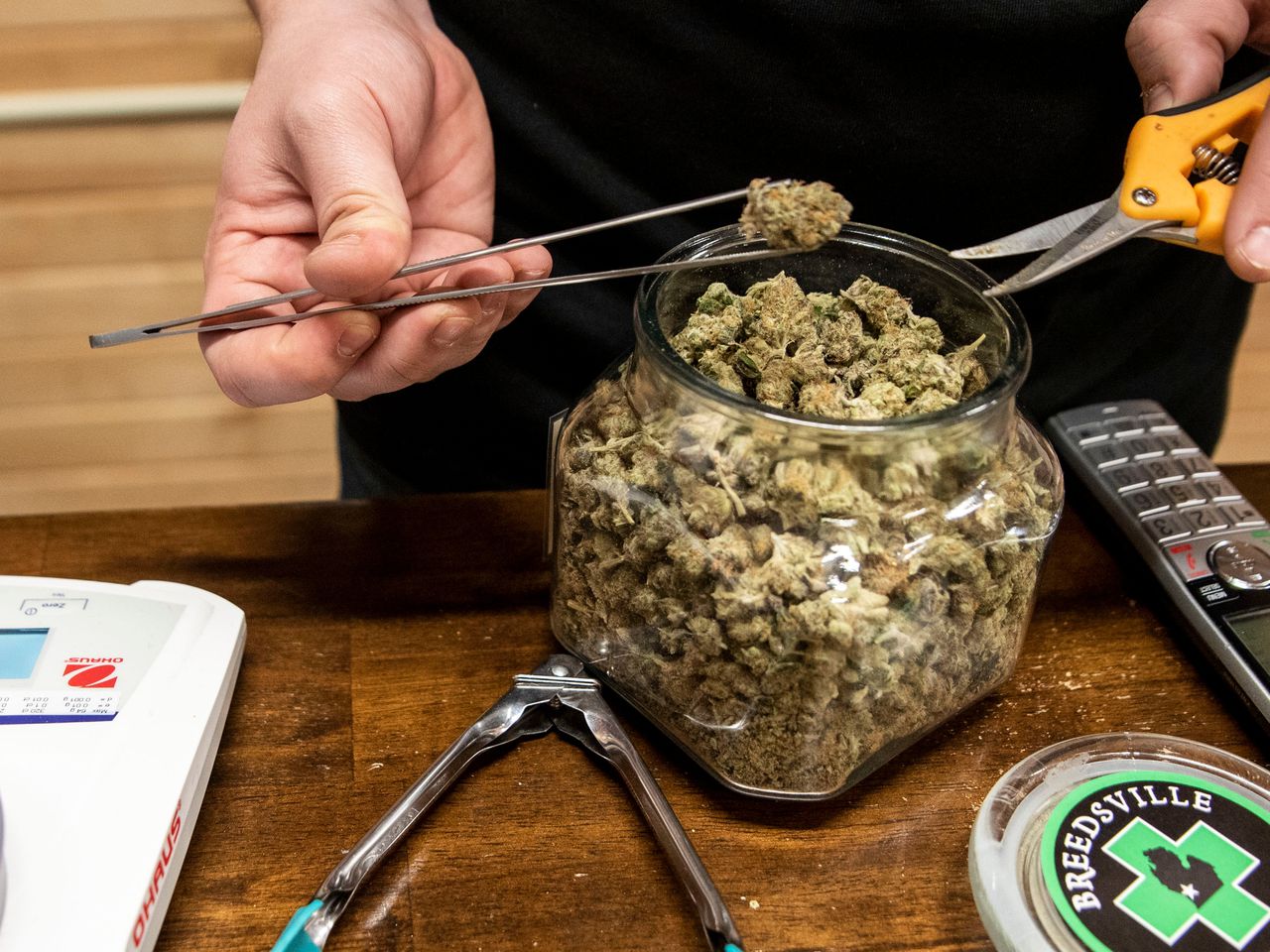Introduction
Medical marijuana has become one of the most discussed and researched topics in modern healthcare. Once surrounded by stigma and controversy, cannabis is now being recognized for its potential medical benefits and therapeutic applications. From managing chronic pain to easing anxiety, medical marijuana is helping millions of patients worldwide improve their quality of life.
As legalization expands across various countries, understanding what medical marijuana is — and how it works — is essential for patients, healthcare professionals, and anyone curious about this evolving field. This guide breaks down everything you need to know: how it works in the body, its key benefits, legal framework, and future in medicine.
What Is Medical Marijuana?
Medical marijuana refers to the use of the cannabis plant or its chemical components to treat diseases or relieve symptoms. Unlike recreational marijuana, medical cannabis is prescribed and regulated under specific medical and legal frameworks.
The cannabis plant contains over 100 chemical compounds known as cannabinoids, with THC (tetrahydrocannabinol) and CBD (cannabidiol) being the most studied. These compounds interact with the body’s natural systems to help manage pain, inflammation, and other symptoms.
Medical marijuana can be consumed in several forms — including oils, capsules, vapors, or edibles — depending on the patient’s condition and doctor’s recommendation. In most countries, access requires a medical prescription and must come from a licensed dispensary or healthcare provider.
See more: The Benefits of Medical Cannabis for Chronic Pain Management
How Cannabis Works in the Human Body
The human body has a complex biological system known as the endocannabinoid system (ECS) — a network of receptors, enzymes, and molecules that help regulate mood, sleep, appetite, pain, and immune responses.
When cannabinoids like THC or CBD enter the body, they interact with CB1 and CB2 receptors in the brain and immune system. THC binds strongly to CB1 receptors, creating psychoactive effects (the “high” sensation), while CBD interacts more subtly, offering anti-inflammatory and calming effects without intoxication.
Research suggests that the ECS plays a major role in maintaining homeostasis — the body’s natural balance. By influencing this system, cannabis-based treatments can support recovery and symptom management in numerous conditions.
Key Medical Uses and Benefits
Medical marijuana’s therapeutic applications have expanded rapidly over the past two decades. While research is still ongoing, evidence supports its use in several key areas:
1. Chronic Pain Management
Cannabis is widely used to manage chronic pain, particularly in conditions like arthritis, neuropathy, and multiple sclerosis. A 2022 review published in The Journal of Pain found that cannabis-based treatments significantly reduced pain in patients resistant to conventional medications.
2. Neurological Disorders
CBD-rich extracts have proven effective for epilepsy — notably in treating rare forms like Dravet Syndrome. The FDA-approved drug Epidiolex is a prime example of cannabis-based therapy now part of mainstream medicine.
3. Cancer Treatment Support
Medical marijuana helps reduce nausea and vomiting caused by chemotherapy and stimulates appetite in patients undergoing cancer treatments.
4. Mental Health Support
Low doses of cannabis have shown promise in easing anxiety, depression, and post-traumatic stress disorder (PTSD). However, misuse can worsen symptoms, highlighting the importance of medical supervision.
5. Inflammatory and Autoimmune Conditions
Due to its anti-inflammatory properties, cannabis is being studied for conditions like Crohn’s disease, rheumatoid arthritis, and multiple sclerosis.

The Role of Cannabinoids: CBD and THC
Understanding CBD and THC is key to understanding how medical marijuana works.
- CBD (Cannabidiol): Non-psychoactive and known for its anti-inflammatory, anti-anxiety, and neuroprotective properties. Often used for epilepsy, pain, and anxiety.
- THC (Tetrahydrocannabinol): Psychoactive compound responsible for the “high.” Effective in pain relief, nausea control, and muscle spasticity.
Modern medical treatments often balance CBD-to-THC ratios to provide symptom relief without strong psychoactive effects. For instance, a 1:1 ratio of CBD to THC can be effective for pain management while reducing intoxication.
Medical Marijuana in Modern Treatments (Real-World Examples)
Medical cannabis is now part of treatment plans in countries like Australia, Canada, Israel, and the United States.
- In the U.S.: Over 30 states allow medical cannabis for specific conditions. States like California and Colorado have integrated it into pain management and palliative care programs.
- In Australia: The Therapeutic Goods Administration (TGA) oversees prescription cannabis, primarily used for chronic pain and chemotherapy-induced nausea.
- In Israel: Cannabis research has been ongoing for decades, focusing on PTSD and cancer symptom relief.
Real-world patient data shows positive outcomes, with many reporting improved sleep, reduced pain, and decreased dependency on opioids.
Legal and Ethical Considerations
The legal landscape of medical marijuana varies widely around the world. In some countries, like Canada, it’s fully legalized for medical and recreational use. Others restrict access strictly to patients with qualifying conditions and prescriptions.
Key considerations include:
- Prescription Requirements: Only licensed healthcare professionals can prescribe medical cannabis.
- Product Quality and Regulation: Medical cannabis products undergo testing for purity and potency.
- Ethical Concerns: There’s ongoing debate over accessibility, potential misuse, and the pharmaceutical industry’s role in regulating natural substances.
Understanding your local laws is crucial — even within a single country, regulations can differ by state or region.
Potential Risks and Side Effects
While generally well-tolerated under medical supervision, medical marijuana can cause side effects such as:
- Dizziness or fatigue
- Dry mouth and increased appetite
- Short-term memory impairment
- Increased heart rate in some users
In rare cases, long-term use of high-THC products can lead to dependency or cognitive changes, particularly in younger users. Therefore, medical oversight and proper dosing are essential to minimize risks.
The Future of Cannabis in Medicine
The future of cannabis in medicine looks promising. Ongoing research is exploring how cannabinoids can help with neurodegenerative diseases like Alzheimer’s and Parkinson’s, as well as chronic inflammatory disorders.
Public perception is shifting too — once stigmatized, cannabis is now viewed as a viable medical treatment supported by evidence and scientific research. As legal frameworks evolve, we can expect more pharmaceutical-grade cannabis products, better dosage precision, and wider insurance coverage in the years ahead.
Conclusion
Medical marijuana represents a significant step forward in personalized, holistic medicine. From easing chronic pain to supporting mental health, cannabis offers real hope for patients seeking alternatives to traditional pharmaceuticals.
However, responsible use and professional guidance remain critical. Whether you’re a patient exploring new treatment options or a healthcare provider seeking to understand emerging therapies, staying informed is the key to harnessing cannabis safely and effectively.
FAQS
Medical marijuana is prescribed to treat chronic pain, anxiety, epilepsy, and nausea related to chemotherapy. It can improve sleep, reduce inflammation, and help patients transition away from opioid-based medications under medical supervision.
No. Medical marijuana is used under prescription with regulated cannabinoid levels for therapeutic purposes. Recreational marijuana is consumed for pleasure and often has higher THC content without medical oversight.
Some side effects include dizziness, fatigue, or temporary memory issues. However, when used under professional supervision, medical marijuana is generally safe and effective for chronic conditions like pain or epilepsy.
Patients must consult a licensed healthcare professional to obtain a prescription and purchase products from authorized dispensaries. Regulations differ across regions, so it’s essential to check local laws.
CBD is non-psychoactive and known for its calming, anti-inflammatory effects, while THC produces euphoria but offers potent pain relief. Medical formulations often balance both compounds for optimal results.
